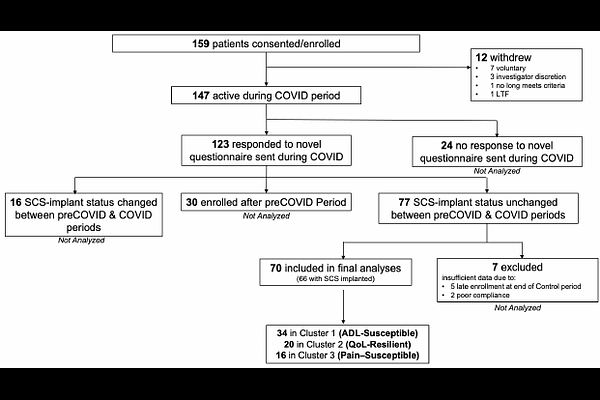The Impact of COVID-19 on Chronic Pain: Multidimensional Clustering Reveals Deep Insights into Spinal Cord Stimulation Patients

The Impact of COVID-19 on Chronic Pain: Multidimensional Clustering Reveals Deep Insights into Spinal Cord Stimulation Patients
Sara Berger, Carla Agurto, Guillermo Cecchi, Elif Eyigoz, Brad Hershey, Kristen Lechleiter, NAVITAS/ENVISION studies physician author group, Dat Huynh, Matt McDonald, Jeffrey L Rogers
AbstractThe emergence of COVID-19 offered a unique opportunity to study chronic pain patients as they responded to sudden changes in social environments, increased community stress, and reduced access to care. We report findings from n=70 Spinal Cord Stimulation (SCS) patients before and during initial pandemic stages resulting from advances in home monitoring and artificial intelligence that produced novel insights despite pandemic-related disruptions. From a multi-dimensional array of frequently monitored signals-including mobility, sleep, voice, and psychological assessments-we found that while the overall patient cohort appeared unaffected by the pandemic onset, patients had significantly different individual experiences. Three distinct patient responses (sub-cohorts) were revealed, those with: worsened pain, reduced activities, or improved quality of life. Remarkably, none of the specific measures by themselves were significantly affected; instead, it was their synergy that exposed the effects elicited by the pandemic onset. Partial correlations illustrating linked dimensions by sub-cohort during the pandemic and those associations were different for each sub-cohort before COVID-19, suggesting that daily at-home tele-monitoring of chronic conditions may reveal novel patient types. This work highlights the opportunities afforded by applying modern analytic techniques to more holistic and longitudinal patient outcomes, which might aid clinicians in making more informed treatment decisions in the future.